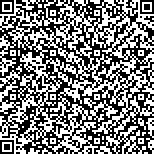| 引用本文: | 张莉恒,丁 君,韩昭衡,常亚青,宋 坚,田 莹,白雪秋,丁文君.仿刺参骨片的种类和形态学研究[J].海洋科学,2015,39(4):8-14. |
| |
|
| 摘要: |
| 以大连海洋大学农业部北方海水增养殖重点实验室培育的已明确年龄(1 龄、2 龄、3 龄)的仿刺参(Apostichopus japonicus)为实验材料, 采用原位压片法对仿刺参棘、体壁、触手、管足、纵肌、呼吸树、肠7 种组织标本进行骨片形态学观察和SPSS 统计分析, 获得了不同年龄、组织仿刺参中各类型骨片的相对比例。结果表明, 原位压片法得到的骨片较NaClO 法结构损坏较小, 且能观察到骨片在组织中的分布。仿刺参各组织中存在桌形体、扣形体、杆状体、花纹状体、复合盘状骨片和长孔状体6 种主要骨片类型。体壁中主要骨片类型为扣形体和桌形体; 棘和触手中主要骨片类型为扣形体、桌形体和杆状体; 管足中主要骨片类型为特有的复合盘状骨片、扣形体和桌形体; 呼吸树和肠中主要骨片类型为花纹状体; 纵肌不含任何类型骨片。不同组织间相同类型骨片的形态结构一致, 无组织间特异性。通过对不同年龄仿刺参各组织的骨片比较分析发现, 不同年龄仿刺参相同组织中骨片比例存在差异,例如, 1 龄、2 龄、3 龄仿刺参触手中桌形体骨片的相对比例分别为11.55%±2.69%、20.76%±2.34%、3.75%±0.72%, 2 龄仿刺参触手中桌形体骨片的相对比例显著高于1 龄、3 龄仿刺参触手中桌形体骨片比例(P<0.05); 1 龄、2 龄、3 龄仿刺参棘中扣形体相对比例分别为92.55%±1.98%、65.45%±1.79%、88.36%±3.08%, 2 龄仿刺参棘中扣形体相对比例显著低于1 龄和3 龄仿刺参棘中扣形体骨片比例(P<0.05)。本研究为仿刺参的基础生物学研究提供资料, 为仿刺参的年龄鉴别提供参考。 |
| 关键词: 仿刺参(Apostichopus japonicus) 骨片 形态学 |
| DOI:10.11759/hykx20140226002 |
| 分类号: |
| 基金项目:国家“863”计划项目(2010AA10A401, 2012AA10A412); 辽宁省农业攻关及成果产业化项目(2011203003, 201401549) |
|
| Classification and morphology of ossicles of Sea cucumber (Apostichopus japonicus) |
|
|
| Abstract: |
| In this study, the sea cucumbers (Apostichopus japonicus)cultivated by Dalian Ocean University, Key Laboratory of Mariculture & Stock Enhancement in North China′s Sea, Ministry of Agriculture, with clear ages (1~3 years old) were used as experimental materials. The proportions of various types of ossicles in different tissues including spine, body wall, tentacle, tube feet, longitudinal muscle, respiratory tree and intestine were obtained and analyzed with in-situ compression method. The results showed that in-situ compression method was superior to NaClO method. The in-situ compression method created less damage to the structure of ossicles. And the distribution of ossicles can be observed clearly by this method. Six types of ossicles, including table-shaped ossicles, button-shaped ossicles, rod-shaped ossicles, rosste-shaped ossicles, composite discoid ossicles and long hole-like body ossicles were observed. The button-shaped ossicles and table-shaped ossicles were observed in body wall; the button-shaped ossicles, table-shaped ossicles and rod-shaped ossicles were observed in spine and tentacle; unique composite discoid ossicles, button-shaped ossicles, and table-shaped ossicles were observed in tube foot; rosste-shaped ossicles were observed in respiratory tree and intestine; no ossicles were observed in longitudinal muscle. The structures of the same type ossicles in different tissues were same. There is no specific structure in different organizations. Furthermore the proportions of different types or ages were different in the same tissue, the proportion of table-shaped ossicles in the tentacle of A. japonicus (1, 2 and 3 years old)was 11.55% ±2.69%, 20.76%±2.34% and 3.75%±0.72%, respectively. The proportion of table-shaped ossicles in the tentacle of 2 years old A. japonicus was significantly higher than that of table-shaped ossicles in the tentacle of 1 and 3 years old (P<0.05). The proportion of button-shaped ossicles in the spine was 92.55%±1.98%, 65.45%±1.79% and 88.36%±3.08%, respectively. The proportion of button-shaped ossicles in the spine of 2 years old A. japonicus was significantly lower than that of button-shaped ossicles in the spine of 1 and 3 years old (P<0.05). This reseach provided information for basic biological research of sea cucumber, and also a reference for identification of sea cucumber ages. |
| Key words: sea cucumber (Apostichopus japonicus) ossicle morphology |
